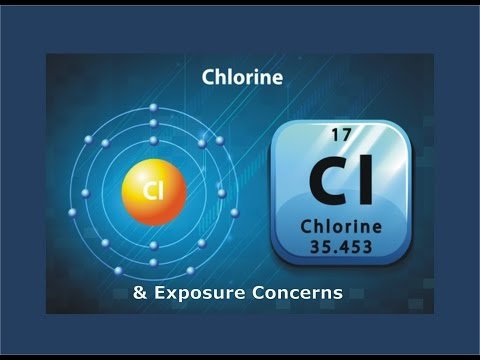Chlorine is a powerful disinfectant and bleaching agent. In both gas and liquid forms it is toxic and extremely dangerous. Exposure can result in death. Workers should take every precaution when working with or around chlorine.

How workers can be exposed
Mainly used as a disinfectant, chlorine is often used anywhere water needs to be treated. This includes swimming pools, water and sewage treatment plants, and community water supplies.
As an industrial product it is used in:
- Pulp and paper industries
- Pool chemical products
- Cleaning products
- Mining processes
- Bleach manufacturing
- Plastics manufacturing
Chlorine gas has a sharp, pungent odour. In high concentrations it has a greenish-yellow colour. In smaller concentrations it is colorless. Both the liquid and gas forms of chlorine are dangerous, but most exposures are a result of the gas.
The risks
Exposure to chlorine can be fatal. The biggest danger when working with chlorine is a gas leak. Since it is heavier than air, the gas will settle in low places and begin to fill a room. If exposed to the gas, workers should get out of the area immediately and seek first aid.
Symptoms of chlorine exposure include:
| Low concentrations |
|
| High concentrations |
|
How to reduce the risks
If chlorine gas leaks into the workplace, notify a supervisor immediately. Initiate emergency procedures.
The most effective way to reduce the risk of exposure to chlorine is to eliminate the source of exposure. If that’s not possible, there are other risk controls to use. These should be identified in your exposure control plan. When choosing risk controls, start by asking yourself the questions in the following steps. The steps are listed in order of effectiveness.
Elimination or substitution
Eliminating the hazard by substituting a safer process or material, where possible, is the most effective control. Some questions to consider:
- Can a less hazardous material be used?
- Can an alternative disinfection treatment be used?
- Can a different, less hazardous bleaching agent be used?
- Can a substitute chemical reagent be used?
Engineering controls
Making physical modifications to facilities, equipment, and processes can reduce exposure. Some questions to consider:
- Can ventilation be improved?
- Can chlorine be stored in a dedicated sealed room with a fan at floor level that exhausts to the outside?
- Can an automatic or remote shutdown be used?
- Can monitors and alarms be installed to measure the levels of chlorine?
Administrative controls
These involve changing work practices and work policies. Providing awareness tools and training also count as administrative controls. All can limit the risk of chlorine gas exposure. Some questions to consider:
- Has an exposure control plan been developed?
- Can warning signs be posted in the work area?
- Have workers had instruction and training on the dangers and controls for working around chlorine?
- Can signs explaining exposure symptoms be posted?
- Can written safe work procedures be posted?
- Can a communication plan for notifying everyone in the area of a leak be posted?
Personal protective equipment
This is the least effective control. When used, there must always be at least one other control in place as well. Some questions to consider:
- Do workers have the proper respirators, eye wear, and protective clothing?
- Has personal protective equipment been tested to make sure it is working properly?



